finance-twitter:
The U.S. Downgrades Malaysia Air Safety Rating – Here’s Why It’s More Damaging Than You Thought
Malaysia has now joined the likes of Bangladesh, Ghana, Costa Rica and neighbour Thailand after the U.S. Federal Aviation Administration (FAA) unexpectedly downgraded the country’s air safety rating to Category-2. Effectively, airlines from the Southeast Asian nation are not allowed to add new flights to the United States, according to the U.S. Department of Transportation.
The new assigned rating also means the air carriers from Malaysia cannot start new services and are restricted to current levels of any existing service to the United States. To make matters worse, all the Malaysian carriers would also be subject to additional inspections at U.S. airports. Such checking obviously will impact the turnaround time and profitability of the country’s carriers.
Currently, AirAsia X is the only Malaysian airline that provides airline route to the United States via Osaka to Honolulu. Financial-plagued Malaysia Airlines had suspended flights into Los Angeles in 2014, the only metropolis in the United States to receive services to Kuala Lumpur via Tokyo. Subsequently, the national carrier also stopped flying to Paris in 2016.
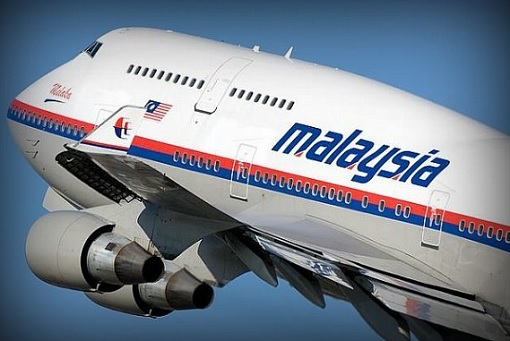
However, according to Malaysia Airlines Bhd Group Chief Executive Officer, Captain Izham Ismail, the national carrier is interested and may fly again to the U.S. and France. Slapped with Category-2, any reciprocal code-sharing arrangements between U.S. carriers and Malaysian carriers will not be allowed. But currently there are no direct flights between the U.S. and Malaysia.

However, according to Malaysia Airlines Bhd Group Chief Executive Officer, Captain Izham Ismail, the national carrier is interested and may fly again to the U.S. and France. Slapped with Category-2, any reciprocal code-sharing arrangements between U.S. carriers and Malaysian carriers will not be allowed. But currently there are no direct flights between the U.S. and Malaysia.
Just because there are no direct flights between both nations doesn’t mean the downgrade would not hurt the country’s air carriers. Malaysia Airlines and American Airlines have reciprocal code-sharing since 2013. And the national carrier depends on this arrangement to market itself as if the airline actually offers one-stop air connectivity between America and Malaysia.
Code sharing is a type of marketing tool or arrangement that allows the airlines (example Malaysia Airlines) to place its designator code on a flight operated by another airline (example American Airlines) and sell tickets on behalf of that airline. In this case, passengers appear to travel through the Malaysia Airlines to the U.S., but eventually, it is the American Airlines who is operating the flight.
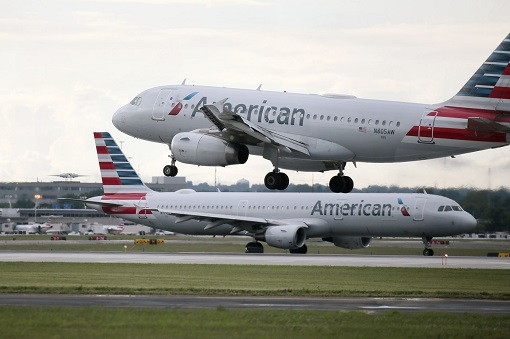
That’s why you can go to the Malaysia Airlines website and book a ticket from Kuala Lumpur to Chicago as if one-stop air connectivity exists between both cities, when in fact the Malaysian Airbus will make a stop at Heathrow, London, before passengers take a Boeing 787-8 operated by American Airlines to continue the remaining journey to Chicago.

That’s why you can go to the Malaysia Airlines website and book a ticket from Kuala Lumpur to Chicago as if one-stop air connectivity exists between both cities, when in fact the Malaysian Airbus will make a stop at Heathrow, London, before passengers take a Boeing 787-8 operated by American Airlines to continue the remaining journey to Chicago.
Now that Malaysia has been downgraded, air carriers from the country cannot establish new service or add new routes to and from the U.S. This means increases of tourist arrivals into Malaysia as part of the Visit Malaysia 2020 campaign, for example, will be affected. The FAA’s safety rating is based on a country’s aviation oversight regime and is an assessment of the country’s civil aviation authority.
In a nutshell, the downgrade was not related to Malaysia air carriers but rather problems with the Civil Aviation Authority of Malaysia (CAAM). The U.S. Department of Transportation’s FAA official statement says it has found that the CAAM does not meet International Civil Aviation Organization (ICAO) safety standards and therefore has received a Category-2 rating.
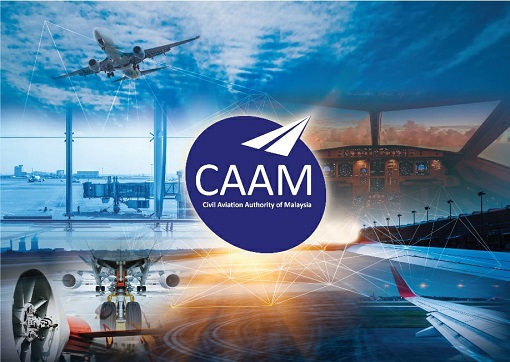
A Category 2 International Aviation Safety Assessment (IASA) rating means that CAAM – a body equivalent to the FAA for aviation safety matters – is deficient in one or more areas, such as technical expertise, trained personnel, record-keeping, and/or inspection procedures. This statement is similar to that when the Costa Rica’s air safety rating was downgraded.
In May this year, the U.S. authority downgraded Costa Rica’s air safety rating to Category-2, saying it doesn’t comply with ICAO safety standards. Costa Rica was assigned an initial Category-1 rating back in 1996. Malaysia, on the other hand, was assigned a Category-1 rating in 2013, a recognition that CAAM had complied with ICAO standards for aviation safety oversight.
So, what has gone wrong? Apparently, the FAA conducted an in-country reassessment of Malaysia under the IASA program in April 2019, and met with the CAAM on July 2019 to discuss the audit results. However, it appears that Malaysia’s aviation safety standard has plunged to a worrying stage so much so that the U.S. regulator had to take the drastic action.
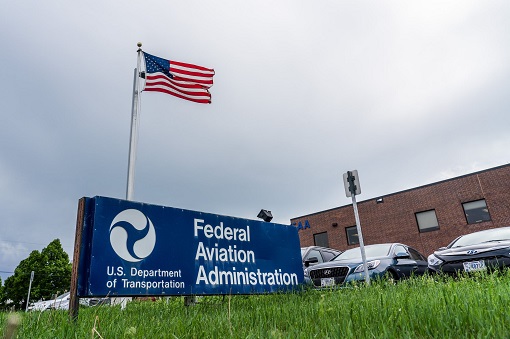
To ensure it is not accused of being biased, the FAA said the assessments determine whether civil aviation authorities are meeting ICAO safety standards, not FAA regulations. The ICAO is a UN specialized agency established in 1944 and works with the Convention’s 193 Member States and industry groups to reach consensus on international civil aviation standards, practices and policies.

To ensure it is not accused of being biased, the FAA said the assessments determine whether civil aviation authorities are meeting ICAO safety standards, not FAA regulations. The ICAO is a UN specialized agency established in 1944 and works with the Convention’s 193 Member States and industry groups to reach consensus on international civil aviation standards, practices and policies.
Malaysian Prime Minister Mahathir Mohamad said he was not aware of the details of the downgrade. He said – “If there is anything wrong with our civil aviation authority, we will take measures. We will correct the situation, so that the whole world will respect Malaysia’s aviation authority.” Amusingly, this time, the premier didn’t complain about Malaysia being bullied.
But the timing of the downgrade might raise some eyebrows. Less than 2 weeks ago, Mahathir complained that Malaysia was being bullied, apparently by Trump administration, into closing Iranian-link bank accounts or risks being sanctioned by the superpower. The premier has also complained of being bullied by powerful nations – European Union – against Malaysia’s palm oil.
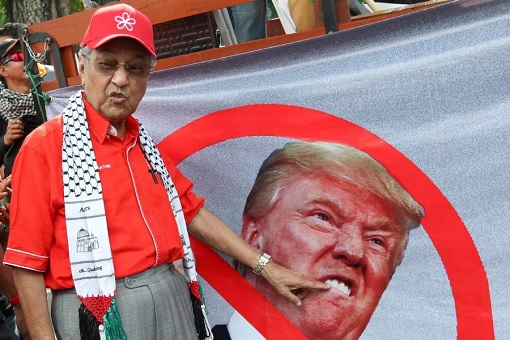
Was FAA pressured to go hard on the Civil Aviation Authority of Malaysia after Mahathir criticised that an unnamed country (obviously referred to the U.S.) unilaterally imposes economic and trade sanctions on another nation (Iran) during the 35th ASEAN Summit in Bangkok, Thailand on Nov 3? The downgrade of Malaysia’s air safety rating might be the first step towards sanctioning the country.

Was FAA pressured to go hard on the Civil Aviation Authority of Malaysia after Mahathir criticised that an unnamed country (obviously referred to the U.S.) unilaterally imposes economic and trade sanctions on another nation (Iran) during the 35th ASEAN Summit in Bangkok, Thailand on Nov 3? The downgrade of Malaysia’s air safety rating might be the first step towards sanctioning the country.
After the missing of Malaysia Airlines Flight MH-370 on 8 March 2014 while flying from Kuala Lumpur International Airport to its destination, Beijing Capital International Airport, another plane – Malaysia Airlines Flight 17 (MH17) – was shot down on 17 July 2014 while flying over eastern Ukraine. All 283 passengers and 15 crew were killed. But those crises happened more than 5 years ago.
Should people worry about flying with Malaysia airlines now that the country has gone down to Category-2? Hopefully not! Rather, the downgrade suggests that there’s no proper oversight of the airlines by the government. In other words, the FAA seems to be giving a hard time to Mahathir administration, which in turn could see the financial impact on the nation’s air carriers.
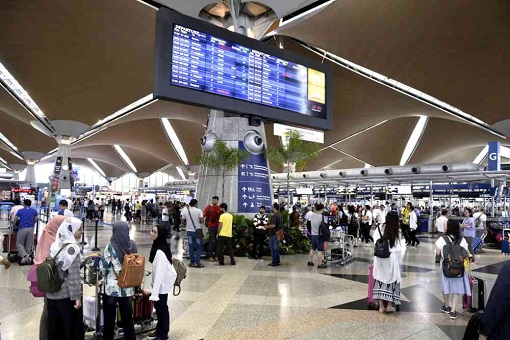
Sure, despite the punishment, Malaysia can pledge to work hard in the next 12 months to get back its Category-1 trophy. But Thailand provides a classic example that it’s not a walk in the park to crawl back to the top spot. Thailand, which was downgraded to Category-2 in December 2015, has since tried but failed to recover the top Category-1 rating.
The U.S. FAA might be tainted in the Boeing 737 MAX scandal, but like it or not, it’s a serious matter when the regulator downgrades a country’s safety rating. That is because other nations like the European Union will most likely follow the FAA recommendations as well – to impose similar restrictions on the Malaysia aviation sector. It is like a “mini sanction” on the country’s air carriers.
It’s absolutely unimaginable to be categorised in the same league as Bangladesh, Ghana, Costa Rica and Curacao. Interestingly, the downgrade of Thailand’s air safety rating happened a year after the military launched a coup d’état in 2014, denying its local airlines business opportunities to open new routes to the U.S.
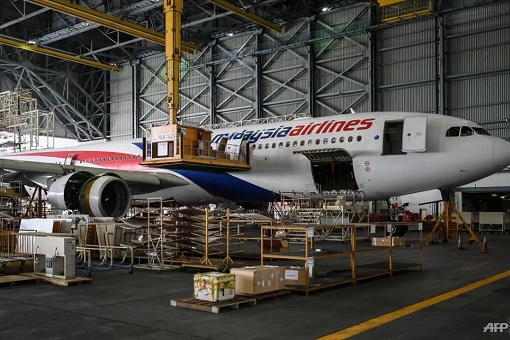
To add salt to the wound, neighbouring Vietnam, a country which Malaysia once looked down upon, has been granted a Category-1 rating in February this year. It sends a message that the Vietnamese Civil Aviation Authority is more professional than the Civil Aviation Authority of Malaysia in ensuring the airworthiness and respecting international safety standards.

To add salt to the wound, neighbouring Vietnam, a country which Malaysia once looked down upon, has been granted a Category-1 rating in February this year. It sends a message that the Vietnamese Civil Aviation Authority is more professional than the Civil Aviation Authority of Malaysia in ensuring the airworthiness and respecting international safety standards.
At best, Malaysia’s aviation safety standards have been in the gradual degradation until the FAA discovered the jaw-dropping red flags – from breaches of procedures to cutting corners. At worst, the U.S. could have just started its retaliation against Mahathir administration, thanks to the premier’s toxic mouth. Either way, the country has lost its dignity in the eyes of international (and local) travellers.
*********
kaytee notes:
Some years ago there was a non-US airline crash which killed many Americans. The US Congress then demanded that the Federal Aviation Authority (FAA) play a more assertive role in ensuring such tragic mishaps would be reasonably prevented (from killing Americans).
The FAA thus launched a program where it "audits" foreign aviation regulatory authorities (equivalent of the FAA) which have code-sharing arrangements with US airlines. The FAA intends to ensure foreign airlines would be reasonably safe for American citizens to fly in.
As it was NOT possible to "audit" each & every foreign airline, the FAA reasons that if the respective foreign national regulatory authorities have in place good and sound safety structure, regulations and programs, and diligently practise them well, their respective airlines would be reasonably safe as well.
Thus non-US airlines (eg. MAS, AirAsia, etc) which wish to have code-sharing arrangements arrangements with US airlines must be those whose respective national regulatory authorities have been "audited" by the FAA.
The USA (FAA) does NOT compel any nation to be subjected to its "audit" but if a particular national regulatory authority rejects or refuses the FAA's "audit", then the FAA would inform US-regulated airlines NOT to have code-sharing arrangements with the foreign airlines of that particular nation. The FAA would also advise American citizens that airlines of such and such a nation have NOT been "audited" and travel in its airlines may carry very high risk.
The "audit" is done periodically as all audits should be. My uncles who know people in the Australian Civil Aviation Safety Authority (CASA) affirm such an "audit" as CASA has been periodically checked by the FAA.
My uncles also told me stories about CAAM or rather one particular CAAM officer who embarrassed the name of CAAM (and Malaysia), in that the CAAM officer blatantly ignored reasonable requests of inquiry from a sister organisation, to wit, CASA.
Years back, CASA inquired of CAAM about one Malaysian pilot who flew in Australia with Australian licence but with Malaysian flying training, and who was regarded as 'dodgy' and unsafe. T'was said that repetitive CASA letters of inquiry on matters related to the pilot were ignored until CASA in disgust ceased asking CAAM.
Years back, CASA inquired of CAAM about one Malaysian pilot who flew in Australia with Australian licence but with Malaysian flying training, and who was regarded as 'dodgy' and unsafe. T'was said that repetitive CASA letters of inquiry on matters related to the pilot were ignored until CASA in disgust ceased asking CAAM.
Thus I am not surprised the FAA has downgraded CAAM. Nonetheless it's very shameful that the Malaysian aviation regulatory authority has stumbled to such great depths to be alongside the national regulatory authorities of Bangladesh, Ghana, Costa Rica and Thailand. And bearing in mind those countries have considerable disadvantages in their aviation activities which Malaysia did not have, the Fall for CAAM is even more shameful, and worse, lacks that much sought-after 'Dignity'.



Well, under Donald Trump, there is a tendency for the US Administration to use political criteria to intrude into previously strictly scientific and engineering disciplines.
ReplyDeleteThe FAA WAS previously the Grade A+ standard for aviation safety that the rest of the world took the queue from, not any more.
If we don't have the capability to manage the safety of our aeroplanes imagine managing the safety of Redzuan's flying cars....
ReplyDeleteHeads should roll at CAAM, in my honest opinion.....!!!
ReplyDeleteIt should be a clean flash of all those hp6, abang-adikism hanger-ons & gaji-butas!
Delete